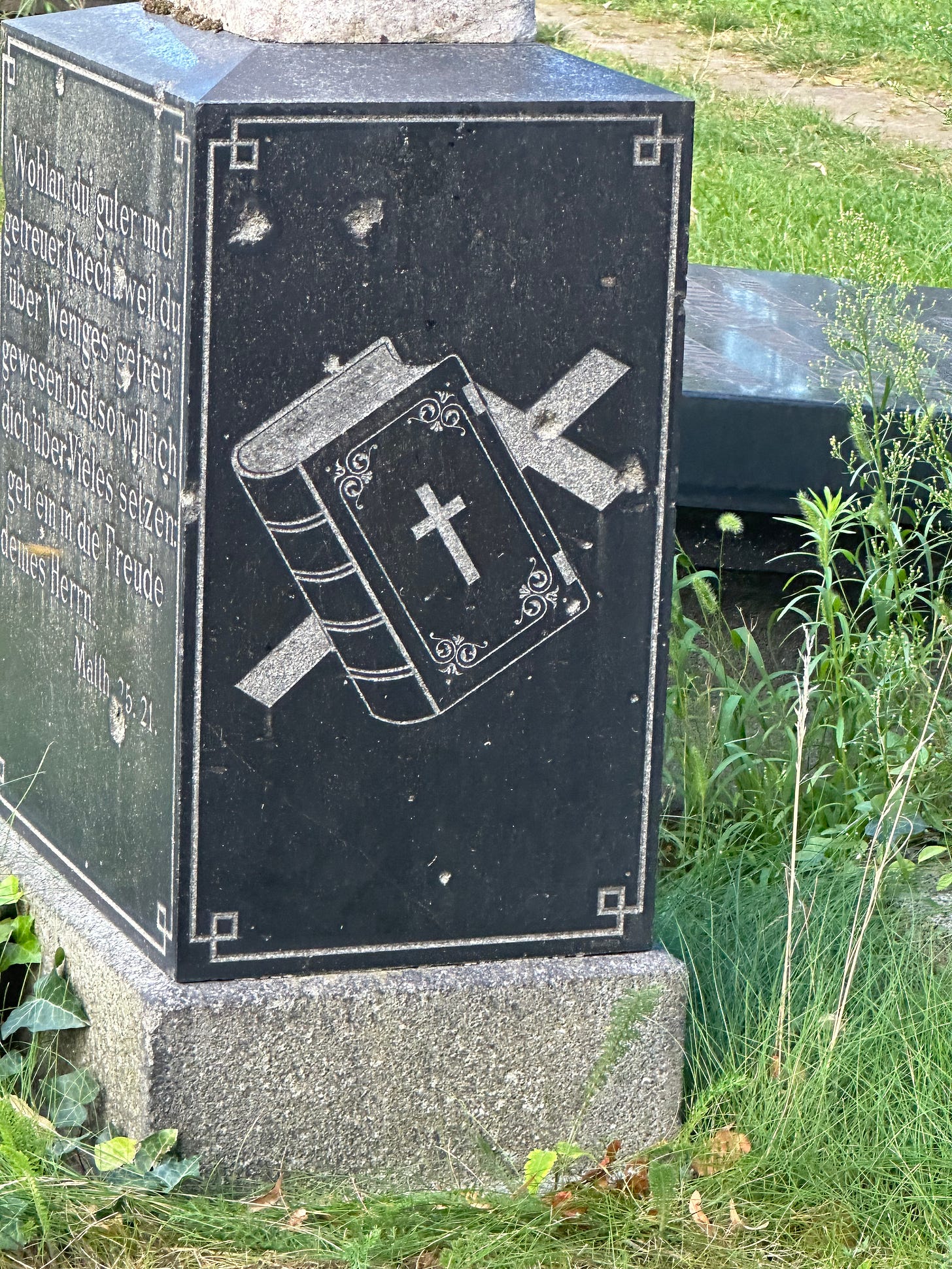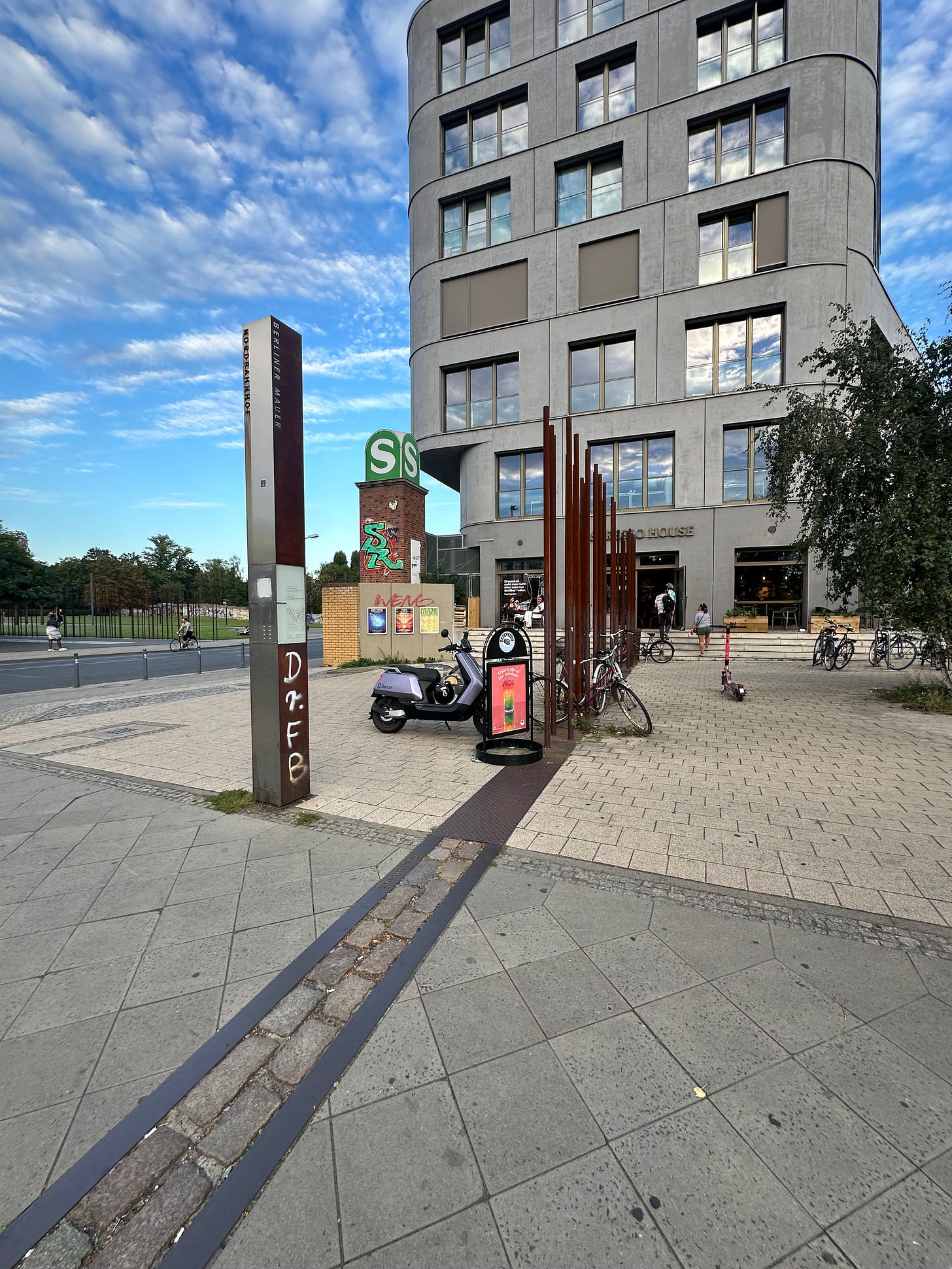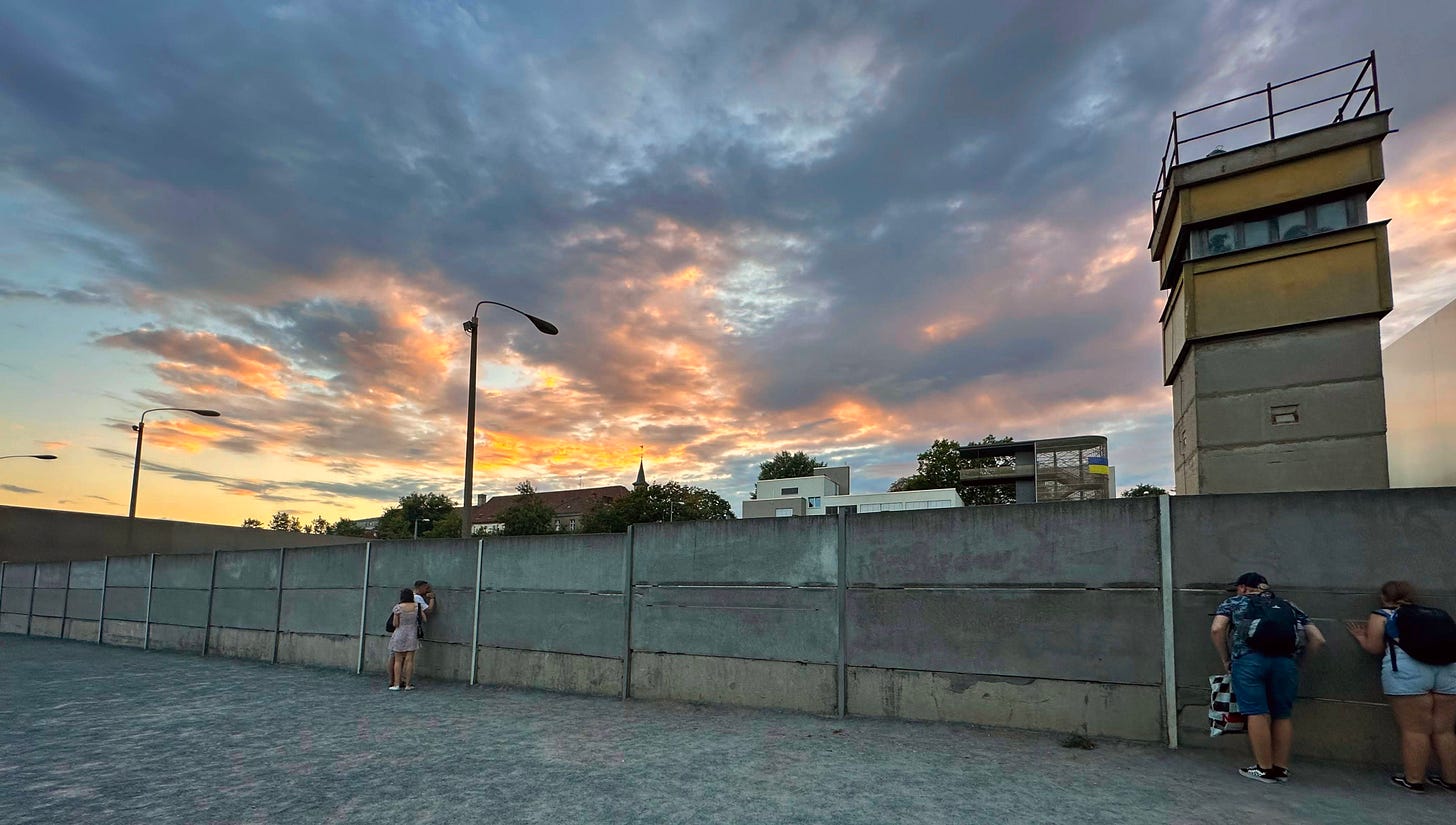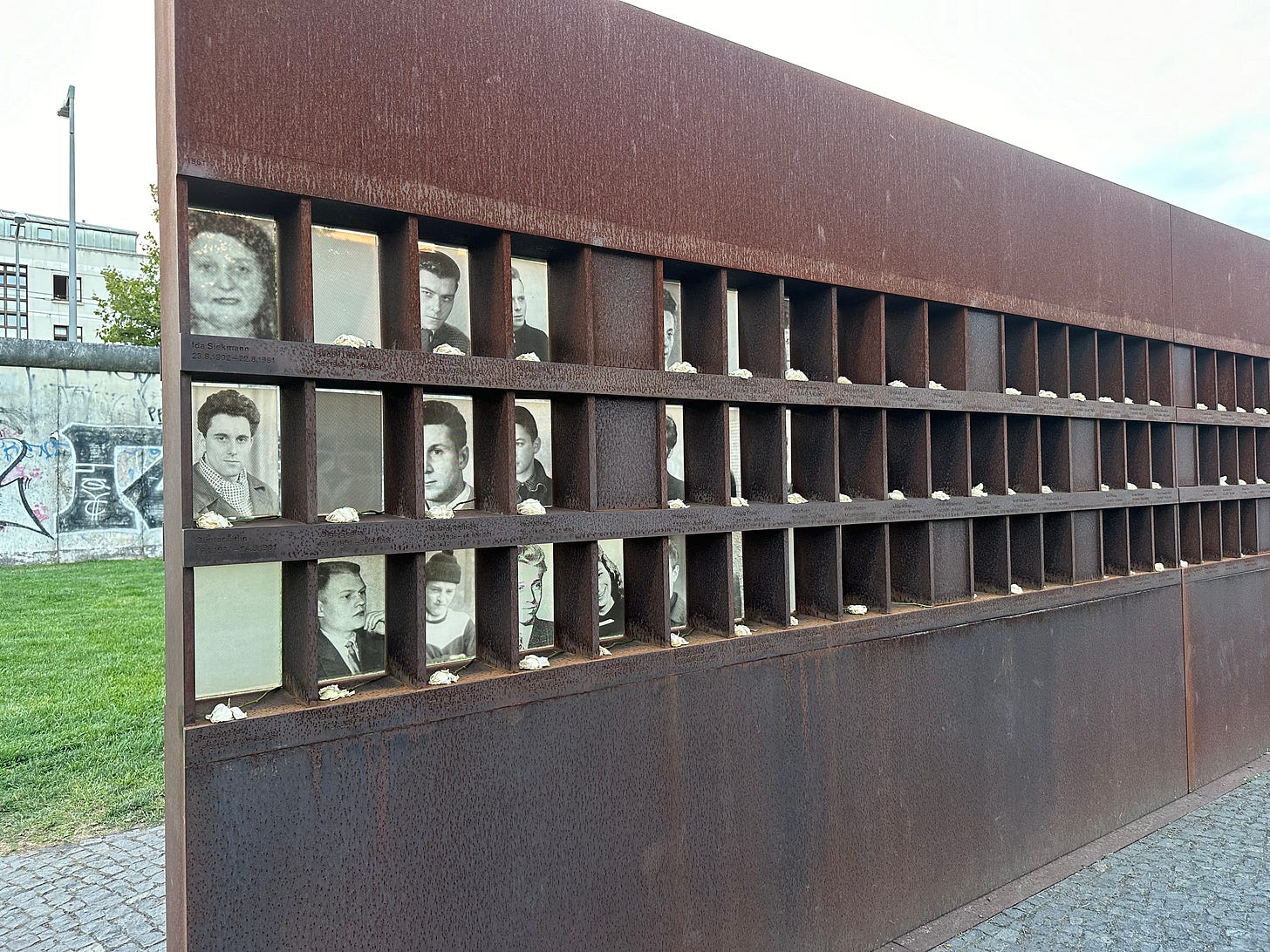Our visit to Berlin and the free walking tour we joined offered more history lessons. Before our visit, my only recollections of the Berlin Wall was President Reagan’s 1987 speech … albeit a typically US-centric view of world history.1
The Battle of Berlin
Our tour began with a review of the Battle of Berlin, one of the final battles of WWII. A conflict that lasted only two weeks but devastated the city, its people, and the Soviet soldiers who fought there. From 20 April to 2 May 1945, the Soviet Red Army took revenge for the suffering their people had endured since 1941. While 2 million Soviet shells reigned down on a city already pounded by Allied bombings, Hitler sent stragglers and Hitler Youth into the streets to fight.

The suspicion that a cellar might contain defenders would result in Soviet grenades being tossed in, with no regard for civilian lives. For German women, the greatest fear was rape, and Soviet soldiers committed this on a vast scale. — Britannica.com
While we do not know how many Germans lost their lives, it is estimated that there were 100,000 Soviet casualties in this battle alone.
To the Victor…
Later that summer, the Allied victors (USA, Great Britain, France, and the Soviet Union) divided Germany and Berlin into four occupation zones during the Potsdam Conference. At first, citizens could move freely between the zones. Many in the Soviet sector worked in a Western sector and would freely cross between districts. Family members might live in a neighboring district…perhaps a grandparent lived one block away. However, over the next 16 years, various factors (the Berlin Blockade, the Berlin Airlift, the formation of “West” and “East” Germany, the Worker’s Revolt, etc.) led to the creation of a divided city.
On the morning of 13 August 1961, Walter Ulbricht (Chairman of the Council of State of the GDR and General Secretary of the Central Committee of the Socialist Unity Party of Germany) ordered erecting barriers and barbed wire. This 165 km (100 mile) barrier became the prison walls that now divided families.
We learned that “the wall” often extended into buildings. While Soviet guards sat in the lobby of a building, firehouses would bring life nets attempting to catch people jumping out of apartment windows on the “Western” side of the building.
Over time, the windows on the “Western” side were bricked up, and a second more substantial wall was built. Between the walls, the desert zone, included guard towers and various barriers. If one successfully scaled the first wall they would likely be shot as they attempted their escape.
In the Berlin Wall Memorial Park, one finds several memorials (including videos) of these times. One cannot visit the park and leave unmoved.
On November 9 (1989), during an evening news conference, an East German government spokesman mistakenly announces that citizens of the German Democratic Republic will now be permitted to travel without restrictions — effective immediately. (The announcement was supposed to be held until the next day.) Unaware of this sudden change in policy, border guards are overwhelmed by crowds of East Berliners who want to cross into West Berlin. Over the next few months the Berlin Wall will soon almost completely disappear. — GermanWay.com

Walking about Berlin, you will observe two rows of parallel bricks designating where the wall once stood. It is a constant reminder of a painful time for the residents of Berlin. Like Terezin, it is a time and place we must never forget.2
Na próxima semana o vinho e a mudança de vida, até la fica bem,
Nanc

Our guide explained that political unrest within Germany caused the wall to come down in 1989.









I had family across Northern Germany . When I first visited in 1976, an aunt came to visit us from East Germany. They were allowed two weeks vacation in the West once they turned 65 years old. It was quite interesting all of the stories she shared.
Thanks so much for sharing your fabulous travels.